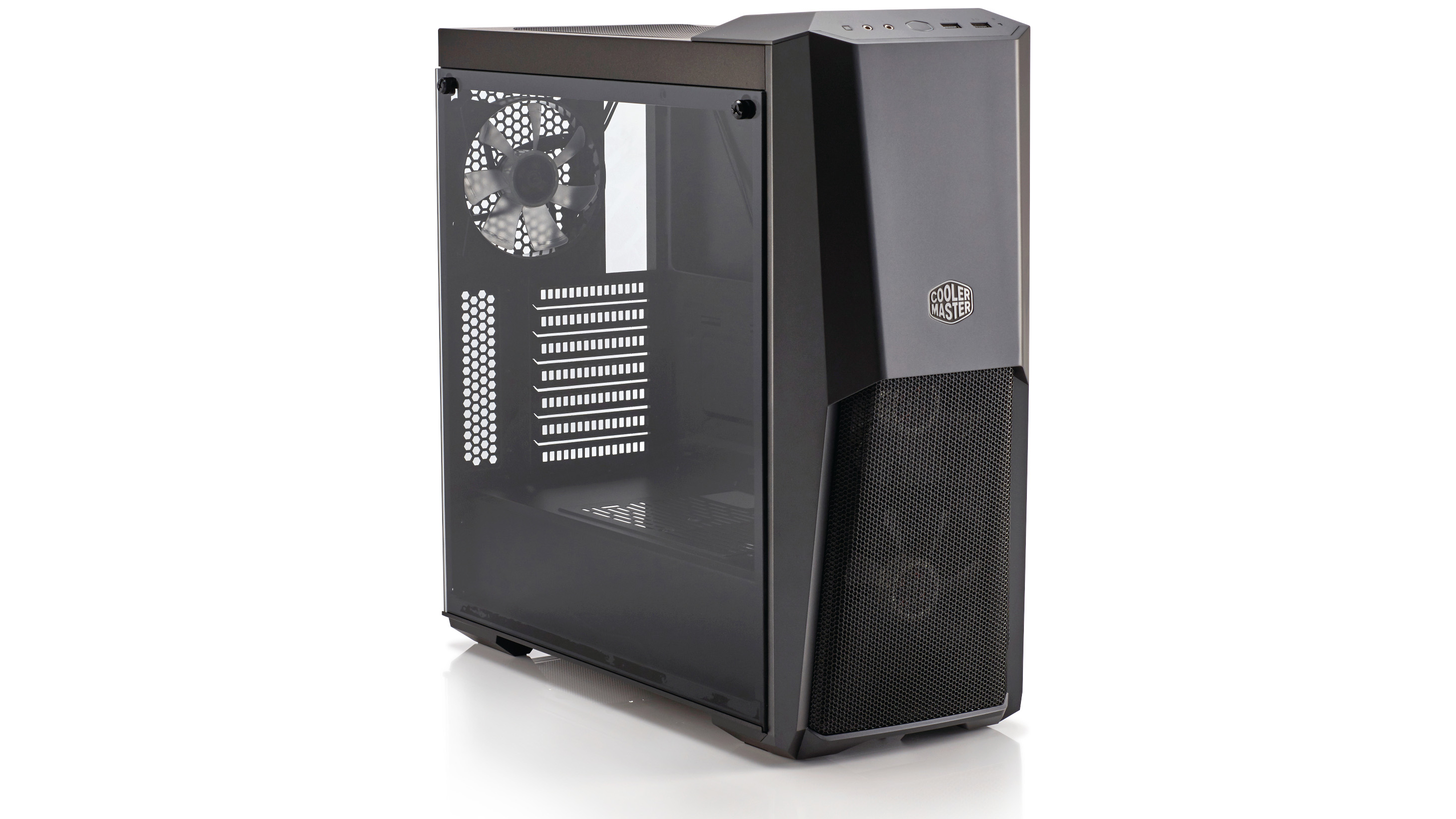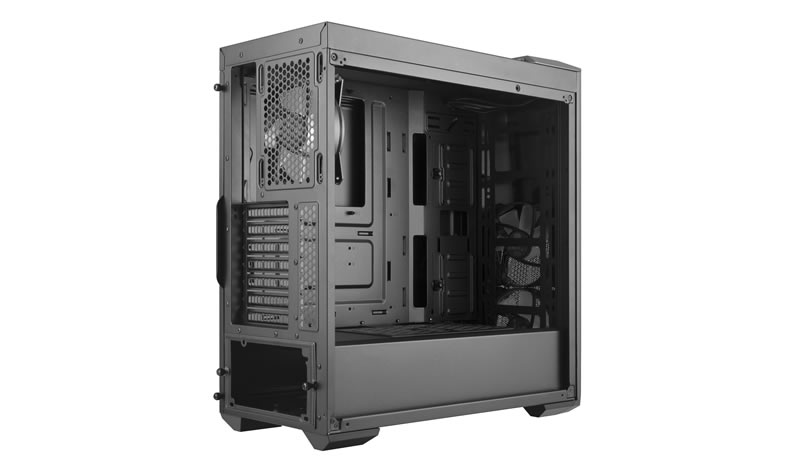Our Verdict
Unless you really need more than three drives installed, this should be your first consideration for a sub-$100 case.
For
- Amazing value
- Easy to build in
- Smart finish
Against
- Limited drive capacity
PC Gamer's got your back

You couldn't ask for more than this budget-end case provides for a very reasonable $70. Five years ago, a case with three RGB fans and a tempered glass panel would be considered wildly opulent, and priced accordingly. And now, here we are, in the age of flossing, Fortnite, and Facebook scandals, staring a budget case in the face with those very features.
Price: $70
Form Factor: Mid-tower
Motherboard Support: ATX, microATX, Mini-ITX
3.5-inch Support: Up to 2
2.5-inch Support: Up to 4
Radiator Support: Up to 360mm (front), up to 120mm (rear)
Dimensions: 19.4 x 8.3 x 18.7 inches
Graphics Card Clearance: 15.7 inches
CPU Tower Clearance: 6.3 inches Weight 16.3lb
Cooler Master has the kind of pedigree to pull off such a feat, you understand. It’s easier to put together a low-end gem when you’ve been putting in the design graft on higher-end models like the venerable HAF X, and iterating on those solid foundations for years, than it would be to devise a solid chassis from scratch.
There’s not much HAF X DNA visible in the aesthetics of this MasterBox MB500, but the fundamentals of good airflow, easy access, and solid build quality are definitely present and correct.
For a mid-tower, the clearances are all ample: 6.3 inches for CPU coolers, 15.7 inches for GPUs, and 7 inches for the PSU, which lives in a generous self-contained module at the base, and has plenty of space for tidying cables away. Even using a non-modular power supply with several extraneous cables, it’s easy to keep things neat by using the PSU enclosure.
We did miss having a hole in the back panel above the motherboard to feed a CPU power cable through, and instead had to make a tight connection across the board face, but this is the only concession to the MB500’s smaller size and less feature-rich design we came across during a system build. However, the case got lucky that we don’t tend to build using a bunch of drives—there’s support for just two 3.5-inch drives or three SSDs, located at the base beyond the PSU enclosure.

If this case doesn't suit your fancy, check out our detailed guide to the best PC cases, with a wide range of styles and sizes for your perfect PC build.
Drive bays and cable access cutouts aside, it’s pretty plain sailing inside the MB500, with plenty of space to screw components in and make cable connections lower on the motherboard, despite just two holes at the side and one below the board. There’s a generous space between the motherboard mounting panel and the removable side panel, which means you don’t have to go crazy with the cable ties in order to achieve a neat look and good airflow. Just stuff unwanted cable lengths out of sight at the rear: Job done.
How about the look and feel of the case when it’s housing a system inside? Well, the plastic finish at the front proved divisive in the office, but the two RGB fans lurking behind the facade, along with one at the rear, are a nice touch for nu-school gaming aesthetes who like every component and peripheral in sight to be color-matched and synched. These can be hooked up to Asus, Gigabyte, and MSI RGB boards, and tweaked using the respective manufacturer’s software suite to apply just the right (read: wrong) shade of wedding-disco lighting.
In terms of finish quality, there are minimal rough or sharp edges inside the case upon which you could damage a fleshy finger or arm, and our only real complaint is that the tempered glass side panel doesn’t sit quite flush with the case, but protrudes a few fractions of an inch further. In other words: No, the look and feel don’t tarnish the bargainous nature of this package either.
So, we’re altogether at a loss as to why someone wouldn’t pick this for their budget build, or even a mid-range build with its priorities in place. After all, it always makes sense to spend more on the bits inside the case and go a tad frugal with the exterior—not that lit fans and glass panels are all that frugal…. Unless you really need more than three drives installed, this should be your first consideration for a sub-$100 case.
This article was originally published in Maximum PC's July issue. For more quality articles about all things PC hardware, you can subscribe to Maximum PC now.
Unless you really need more than three drives installed, this should be your first consideration for a sub-$100 case.
Phil 'the face' Iwaniuk used to work in magazines. Now he wanders the earth, stopping passers-by to tell them about PC games he remembers from 1998 until their polite smiles turn cold. He also makes ads. Veteran hardware smasher and game botherer of PC Format, Official PlayStation Magazine, PCGamesN, Guardian, Eurogamer, IGN, VG247, and What Gramophone? He won an award once, but he doesn't like to go on about it.
You can get rid of 'the face' bit if you like.
No -Ed.


